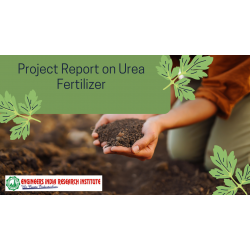Fertilizers Feasibility, Inorganic Fertilizers (Mineral Fertilizer), Diammonium Phosphate, NPK, SSP, Single Super Phosphate, Fertilisers, Urea, Nitrogen Fertilizer,Nitrogenous Fertilizer, Macronutrients & Micronutrients
There are various chemical substances which are known as fertilizers and are known to be supplied to crops to increase productivity. These are used by farmers to increase the yield of the crop./ The best of essential nutrients are contained inside the fertilizers such as phosphorus, potassium as well a nitrogen.
The different types of fertilizers include the following:
1. Inorganic fertilizers / Mineral fertilizers: This is a kind of inorganic fertilizer comprising of synthetic chemicals as well a minerals. Most of these fertilizers are mined from earth. These mineral fertilizers are high in all 3 macronutrients such as potassium chloride, ammonium sulphate, magnesium sulphate, and others.
2. Diammonium Phosphate: This is one of the salts that is produced from ammonia which again reacts with the phosphoric acid. It needs to be noted well that DAP is used as a fertilizer. This is incompatible with alkaline chemicals as well as ammonium ions. The average pH of the diammonium phosphate is 7.5-8.
3. Urea: This type of fertilizer is used as a carbamide and is also used as an inorganic compound. This has the ammonia groups as well as a carbonyl functional group. It is the most important fertilizer and which has ammonia in it.
4. Nitrogen Fertilizer: This type of fertilizer is made from ammonia. This fertilizer is known to be produced by the Haber-Bosch process. The production of nitrogen fertilizer is highly intensive in nature. It is important to distinguish well between good nitrogen as well as bad nitrogen fertilizers.
5. Nitrogenous Fertiliser: This industry includes the production of urea, ammonium nitrate, synthetic ammonia and nitric acid. Nitric acid and synthetic ammonia are used as intermediates in the production of urea fertilizers as well as ammonium nitrate.
6. Macronutrients: It needs to be well noted and understood that protein, fat and carbohydrates are well called macronutrients. These are used in largest amounts. These are technically the components that add nutritional value to food and needs much energy to maintain body systems and body structure.
7. Micronutrients: There are various kinds of nutrients that the body needs which are macrominerals, fat-soluble vitamins as well as trace minerals and water. These are the nutrients that the body uses in relatively large amounts and thus, it needs to be received daily.
Thus, we have well summarized that there are different types of fertilizers which could be categorized as inhibitors, micronutrient fertilizers, potassium fertilizers, phosphorus fertilizers as well as nitrogen fertilizers. The different names of fertilizers are anhydrous ammonia, calcium ammonia nitrate, ammonium chloride, ammonium sulphate, calcium ammonium nitrate, and so on. The fertilizers having much nitrogen levels are ammonium sulphate and urea. When nitrogen content is high, it kind of damages the plants and thus it is often mixed with other agents.
These are fertilizers which supply potassium, nitrogen, phosphorus as well as plant nutrients. The potassium fertilizers are known to make the roots stronger and deeper. It may protect the plants from harm when they are actually deprived from nutrients. Potassium is very essential for photosynthesis and can slow down certain processes. All these fertilizers are associated with a lot of benefits.
UREA FERTILISER (PRODUCTION RATE: 100 TPD)[EIRI/EDPR/4773] J.C.: 2993XLUrea is an important nitrogenous fertilizer. Its utilization is increasing steadily, it being the preferred nitrogen fertilizer worldwide. It is used in solid fertilizer, liquid fertilizer, formaldehyde resins and adhesives.Urea ..
₹ 0 INR
SULPHUR WDG POWDER (PRODUCTION RATE – 100 MT/DAY)[EIRI/EDPR/4752] J.C.: 2972INR, 2972US$Sulphur WDG has wide applications in agriculture industry. It helps in maintaining the appropriate pH of the soil, thereby better uptake of other nutrients, better crop stand, key ingredient in the process of pho..
₹ 0 INR
SULPHUR 80% WDG POWDER (PRODUCTION RATE – 700 TPM)[EIRI/EDPR/4673] J.C.: 2890US$Sulphur WDG has wide applications in agriculture industry. It helps in maintaining the appropriate pH of the soil, thereby better uptake of other nutrients, better crop stand, key ingredient in the process of photosynthe..
₹ 0 INR
CHELATED FERTILIZER[EIRI/EDPR/4668] J.C.: 2885XLINTRODUCTIONThe word chelate is derived from the Greek word chelé, which refers to a lobster's claw. Hence, chelate refers to the pincer-like way in which a metal nutrient ion is encircled by the larger organic molecule (the claw), usually called a lig..
₹ 0 INR
SULPHUR BENTONITE FERTILIZER[EIRI/EDPR/4655] J.C.: 2872XLSulphur-bentonite fertilizer (Sulphur 90) is a form of granular fertilizer that provides plants with the necessary volume of sulphur and restores the alkaline soil. Sulphur bentonite consists of the smallest particles, resulting in fertilizer ..
₹ 0 INR
SULPHUR 80% WDG POWDER (PRODUCTION RATE – 2000 TPM)[EIRI/EDPR/4591] J.C.: 2808US$INTRODUCTIONSulphur WDG has wide applications in agriculture industry. It helps in maintaining the appropriate pH of the soil, thereby better uptake of other nutrients, better crop stand, key ingredient in the process o..
₹ 0 INR
NPK FERTILISER[EIRI/EDPR/4430] J.C.: 2633XLINTRODUCTIONStraight fertilizers such as Calcium Ammonium Nitrate (CAN), Ammonium Nitrate (AN), Ammonium Sulphate (AS), Urea, Single Superphosphate (SSP), Triple Superphosphate (TSP), Potash (Potassium Chloride) (MOP) and combined types such as Mono-Ammoniu..
₹ 0 INR
PHOSPHORIC ACID FROM ROCK PHOSPHATE AND SPENT HCL[CODE NO.4358] Phosphoric acid (PA) is an important industrial chemical used as an intermediate in the fertilizer industry, for metal surface treatment in the metallurgical industry, and as an additive in the food industry. Wet-process..
₹ 0 INR
NPK FERTILIZER IN GRANULE FORM
[CODE NO.3911]
Straight fertilizers such as Calcium Ammonium Nitrate (CAN), Ammonium Nitrate (AN), Ammonium Sulphate (AS), Urea, Single Superphosphate (SSP), Triple Superphosphate (TSP), Potash (Potassium Chloride) (MOP) and combined types such as Mono-A..
₹ 0 INR
AMMONIUM SULPHATE PLANT
[CODE NO.3903]
Fertilizers are the materials which are added to soils to increase the supply of plant materials & thereby enhance the fertility of the soil. Ammonium sulphate is probably the most extensively used inorganic nitrogeneous fertilizer. In the soil, it ..
₹ 0 INR
NPKS MIX FERTILIZER
[CODE NO.3709]
Straight fertilizers such as Calcium Ammonium Nitrate (CAN), Ammonium Nitrate (AN), Ammonium Sulphate (AS), Urea, Single Superphosphate (SSP), Triple Superphosphate (TSP), Potash (Potassium Chloride) (MOP) and combined types such as Mono-Ammonium Phosp..
₹ 0 INR
N.P.K. FERTILIZER[EIRI/EDPR/1575] J.C.370INTRODUCTIONStraight fertilizers such as Calcium Ammonium Nitrate (CAN), Ammonium Nitrate (AN), Ammonium Sulphate (AS), Urea, Single Superphosphate (SSP), Triple Superphosphate (TSP), Potash (Potassium Chloride) (MOP) and combined types such as Mono-Ammonium ..
₹ 0 INR
Showing 1 to 12 of 12 (1 Pages)




